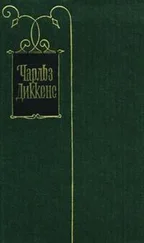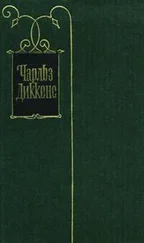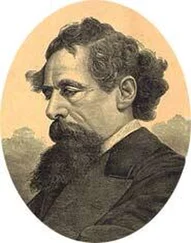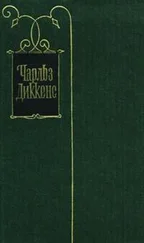Чарльз Диккенс - Pictures from Italy
Здесь есть возможность читать онлайн «Чарльз Диккенс - Pictures from Italy» — ознакомительный отрывок электронной книги совершенно бесплатно, а после прочтения отрывка купить полную версию. В некоторых случаях можно слушать аудио, скачать через торрент в формате fb2 и присутствует краткое содержание. Жанр: foreign_antique, foreign_prose, на английском языке. Описание произведения, (предисловие) а так же отзывы посетителей доступны на портале библиотеки ЛибКат.
- Название:Pictures from Italy
- Автор:
- Жанр:
- Год:неизвестен
- ISBN:нет данных
- Рейтинг книги:5 / 5. Голосов: 1
-
Избранное:Добавить в избранное
- Отзывы:
-
Ваша оценка:
- 100
- 1
- 2
- 3
- 4
- 5
Pictures from Italy: краткое содержание, описание и аннотация
Предлагаем к чтению аннотацию, описание, краткое содержание или предисловие (зависит от того, что написал сам автор книги «Pictures from Italy»). Если вы не нашли необходимую информацию о книге — напишите в комментариях, мы постараемся отыскать её.
Pictures from Italy — читать онлайн ознакомительный отрывок
Ниже представлен текст книги, разбитый по страницам. Система сохранения места последней прочитанной страницы, позволяет с удобством читать онлайн бесплатно книгу «Pictures from Italy», без необходимости каждый раз заново искать на чём Вы остановились. Поставьте закладку, и сможете в любой момент перейти на страницу, на которой закончили чтение.
Интервал:
Закладка:
There are plenty of Saints’ and Virgin’s Shrines, of course; generally at the corners of streets. The favourite memento to the Faithful, about Genoa, is a painting, representing a peasant on his knees, with a spade and some other agricultural implements beside him; and the Madonna, with the Infant Saviour in her arms, appearing to him in a cloud. This is the legend of the Madonna della Guardia: a chapel on a mountain within a few miles, which is in high repute. It seems that this peasant lived all alone by himself, tilling some land atop of the mountain, where, being a devout man, he daily said his prayers to the Virgin in the open air; for his hut was a very poor one. Upon a certain day, the Virgin appeared to him, as in the picture, and said, ‘Why do you pray in the open air, and without a priest?’ The peasant explained because there was neither priest nor church at hand – a very uncommon complaint indeed in Italy. ‘I should wish, then,’ said the Celestial Visitor, ‘to have a chapel built here, in which the prayers of the Faithful may be offered up.’ ‘But, Santissima Madonna,’ said the peasant, ‘I am a poor man; and chapels cannot be built without money. They must be supported, too, Santissima; for to have a chapel and not support it liberally, is a wickedness – a deadly sin.’ This sentiment gave great satisfaction to the visitor. ‘Go!’ said she. ‘There is such a village in the valley on the left, and such another village in the valley on the right, and such another village elsewhere, that will gladly contribute to the building of a chapel. Go to them! Relate what you have seen; and do not doubt that sufficient money will be forthcoming to erect my chapel, or that it will, afterwards, be handsomely maintained.’ All of which (miraculously) turned out to be quite true. And in proof of this prediction and revelation, there is the chapel of the Madonna della Guardia, rich and flourishing at this day.
The splendour and variety of the Genoese churches, can hardly be exaggerated. The church of the Annunciata especially: built, like many of the others, at the cost of one noble family, and now in slow progress of repair: from the outer door to the utmost height of the high cupola, is so elaborately painted and set in gold, that it looks (as Simond describes it, in his charming book on Italy) like a great enamelled snuff-box. Most of the richer churches contain some beautiful pictures, or other embellishments of great price, almost universally set, side by side, with sprawling effigies of maudlin monks, and the veriest trash and tinsel ever seen.
It may be a consequence of the frequent direction of the popular mind, and pocket, to the souls in Purgatory, but there is very little tenderness for the bodies of the dead here. For the very poor, there are, immediately outside one angle of the walls, and behind a jutting point of the fortification, near the sea, certain common pits – one for every day in the year – which all remain closed up, until the turn of each comes for its daily reception of dead bodies. Among the troops in the town, there are usually some Swiss: more or less. When any of these die, they are buried out of a fund maintained by such of their countrymen as are resident in Genoa. Their providing coffins for these men is matter of great astonishment to the authorities.
Certainly, the effect of this promiscuous and indecent splashing down of dead people in so many wells, is bad. It surrounds Death with revolting associations, that insensibly become connected with those whom Death is approaching. Indifference and avoidance are the natural result; and all the softening influences of the great sorrow are harshly disturbed.
There is a ceremony when an old Cavaliére or the like, expires, of erecting a pile of benches in the cathedral, to represent his bier; covering them over with a pall of black velvet; putting his hat and sword on the top; making a little square of seats about the whole; and sending out formal invitations to his friends and acquaintances to come and sit there, and hear Mass: which is performed at the principal Altar, decorated with an infinity of candles for that purpose.
When the better kind of people die, or are at the point of death, their nearest relations generally walk off: retiring into the country for a little change, and leaving the body to be disposed of, without any superintendence from them. The procession is usually formed, and the coffin borne, and the funeral conducted, by a body of persons called a Confratérnita, who, as a kind of voluntary penance, undertake to perform these offices, in regular rotation, for the dead; but who, mingling something of pride with their humility, are dressed in a loose garment covering their whole person, and wear a hood concealing the face; with breathing-holes and apertures for the eyes. The effect of this costume is very ghastly: especially in the case of a certain Blue Confratérnita belonging to Genoa, who, to say the least of them, are very ugly customers, and who look – suddenly encountered in their pious ministration in the streets – as if they were Ghoules or Demons, bearing off the body for themselves.
Although such a custom may be liable to the abuse attendant on many Italian customs, of being recognised as a means of establishing a current account with Heaven, on which to draw, too easily, for future bad actions, or as an expiation for past misdeeds, it must be admitted to be a good one, and a practical one, and one involving unquestionably good works. A voluntary service like this, is surely better than the imposed penance (not at all an infrequent one) of giving so many licks to such and such a stone in the pavement of the cathedral; or than a vow to the Madonna to wear nothing but blue for a year or two. This is supposed to give great delight above; blue being (as is well known) the Madonna’s favourite colour. Women who have devoted themselves to this act of Faith, are very commonly seen walking in the streets.
Конец ознакомительного фрагмента.
Текст предоставлен ООО «ЛитРес».
Прочитайте эту книгу целиком, купив полную легальную версию на ЛитРес.
Безопасно оплатить книгу можно банковской картой Visa, MasterCard, Maestro, со счета мобильного телефона, с платежного терминала, в салоне МТС или Связной, через PayPal, WebMoney, Яндекс.Деньги, QIWI Кошелек, бонусными картами или другим удобным Вам способом.
1
This was written in 1846.
Интервал:
Закладка:
Похожие книги на «Pictures from Italy»
Представляем Вашему вниманию похожие книги на «Pictures from Italy» списком для выбора. Мы отобрали схожую по названию и смыслу литературу в надежде предоставить читателям больше вариантов отыскать новые, интересные, ещё непрочитанные произведения.
Обсуждение, отзывы о книге «Pictures from Italy» и просто собственные мнения читателей. Оставьте ваши комментарии, напишите, что Вы думаете о произведении, его смысле или главных героях. Укажите что конкретно понравилось, а что нет, и почему Вы так считаете.











